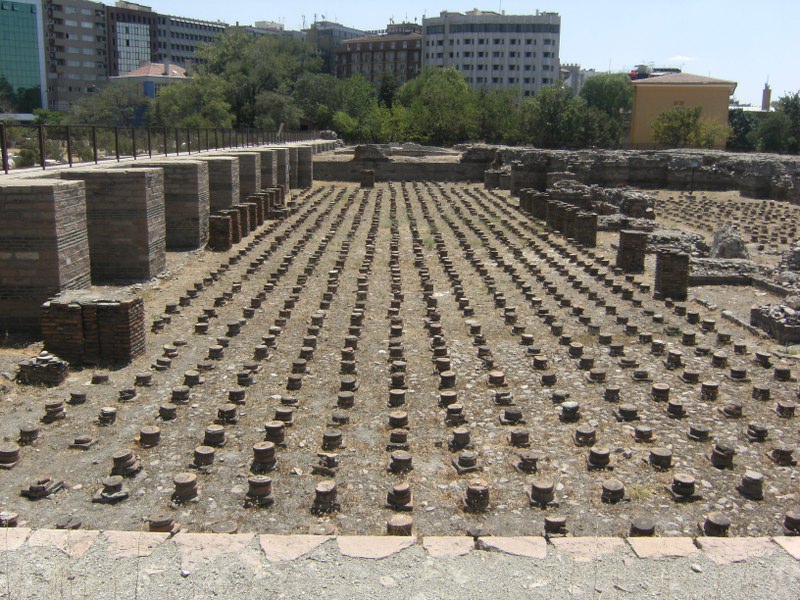If there was one thing that separated the Romans from other civilisations in the ancient world, it is bathing. While many other peoples of the ancient world were known to be somewhat hairy and smelly, perhaps as a back-up to battle tactics that involved painting themselves blue and shouting, the Romans were big on grooming and hygiene. For this reason, Roman bath houses are among the greatest archeological treasures of the time, and Ankara has one of the very best examples.
The Ankara baths were constructed during the reign of Emperor Caracalia, son of Septimius Severus, between 211 and 217 and measured 80 by 130 m. The complex was based on a tumulus on which the baths were situated, around 2.5 m above street level. The remains in place consist partly of Roman layers – particularly from the Byzantine and Seljuk periods – and a Phrygian layer beneath. Made of stone and brick, the entrance area included a colonnaded pavilion, followed by Palestra, a zone for physical education and Greco-Roman wrestling. Lots of angular and circular inscripted columns still stand here. When it was built, the baths were dedicated to the Roman god of health, Asklepion.
Other features include the frigidarium (cool room), piscina (swimming pool) and the apoditarium (changing room). It also has a tepidarium (warm room) and calidarium (hot room), two different kinds of sauna that allow for the variance of air temperatures with the seasons. Large vents helped transmit heat to the water and through the air, as these facilities were not warmed by thermal springs, unlike those at Bath in England. These features were uncovered by archaeological digs in modern times, with the baths having been in use for nearly 500 years before the entire complex was destroyed in a fire. Finds including coins helped date the construction of the baths.
Located about 400 m from Ulus station on the Ankara metro, the entrance to the baths is on Cankiri Street, with admission costing L5 and the site being open from 8:30 a.m. to 5:00 p.m. For anyone interested in Roman history, the baths are a must.









